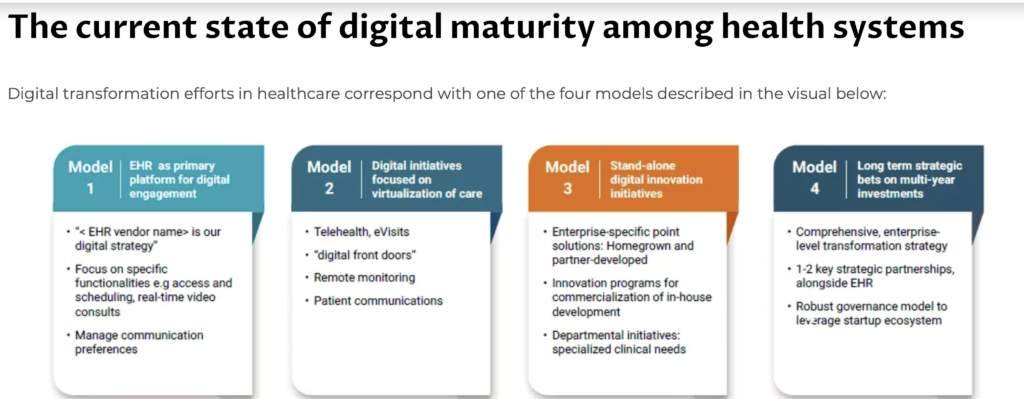By Julie Mann, Chief Commercial Officer, Carium
 May 2021- Picking up tacos, curbside, from my favorite Mexican restaurant is so amazing, and I am grateful every time I do. But, it gets better: margaritas too! I love a good cocktail and have mastered vodka-based martinis, however, margaritas? Not so much. I never would have imagined how much I appreciate the convenience of online ordering and curbside pickup. Delicious tacos, paired with fresh, craft margaritas, made by a professional bartender — there is nothing better than relying on the experts at the Elephant and the Dove.
May 2021- Picking up tacos, curbside, from my favorite Mexican restaurant is so amazing, and I am grateful every time I do. But, it gets better: margaritas too! I love a good cocktail and have mastered vodka-based martinis, however, margaritas? Not so much. I never would have imagined how much I appreciate the convenience of online ordering and curbside pickup. Delicious tacos, paired with fresh, craft margaritas, made by a professional bartender — there is nothing better than relying on the experts at the Elephant and the Dove.  How quickly restaurants and regulations, especially in New York, evolved to let this magic happen is so great.
How quickly restaurants and regulations, especially in New York, evolved to let this magic happen is so great.
The Push to Virtual
COVID-19 has accelerated the advancement of so many great things, in addition to curbside margaritas — including virtual healthcare. According to HIMSS, 77% of consumers are willing to use some form of telehealth, post-COVID. This, coupled with economic incentives and the fact that 85% of people own smartphones, and it became the perfect storm for healthcare’s digital transformation.

Independent providers, hospitals, health systems, and a slew of new care delivery organizations are testing, piloting, and adopting technology to meet the demands of healthcare’s new normal: digital first. The book, “Healthcare’s Digital Transformation” was recently released by Edward Marx and Paddy Padmanabhan and it’s an excellent foundational resource to add some structure, data points, success stories, and common sense, and to catalyze ideas for you to bring to your organization.
Below is one of the infographics from the book that shows common characteristics among health systems on their digital journey.

The New Tech Stack in Healthcare
“We’re now at a tipping point where the digital health market is large enough, and growing quickly enough, to drive demand for companies that serve as the “new tech stack for virtual-first care”, states Julie Yoo in a recent article and video, The New Tech Stack for Virtual First Care.
What hit me in Yoo’s nomenclature: new tech stack. Even taking a look at the infographic above, it is so common for healthcare entities to take technology that was created twenty years ago and try to make it work for virtual care in 2021. A perfect example: an EMR’s portal. The adoption rate is so low — according to Judy Faulkner, founder of Epic, only 0.5% of the 165 million patients engage with their Epic MyChart portal (Judy Faulkner and Epic’s View on Patient Engagement and MyChart). I would suspect the engagement with an EMR’s portal is so low because the EMR was never designed for patients to interact with it. Bolting on a portal to make information accessible was an afterthought.
Today, this new tech stack, to enable digital experiences in healthcare, needs to be simple, easy, and convenient, and it should also be designed to share data to streamline workflows for all.
It’s important that engagement be measured, because the more engaged patients are, the better the outcomes. We’re seeing 85% average patient engagement, month-over-month for patients enrolled in a long-term virtual care program such as chronic care management or remote patient monitoring. Patient engagement rates are a key indicator in measuring the success of a digital tool. It reflects acceptance by the users it’s designed for. It’s interesting to compare the rates for a tool designed for the healthcare consumer in 2021, versus one initially designed without engagement in mind.
The time is now to take advantage of these market dynamics and capitalize on the opportunity to have a new tech stack.
I have always been a partner-first believer and it’s a great strategy today. In September 2019, Gibson Consultants first published an article I wrote, Speed Time-to-Market with a Smaller Investment Through Partnering. The main pillars for choosing partnership over building yourself:
- Speed time to market.
- Reduced time and financial investment.
- Healthcare expertise/proven capability.
Partnering with Innovators in Digital Health
Many organizations are turning to tech companies with digital platforms to underpin their virtual care programs, so they can focus on care transformation and operationalizing their business, while using tech to make it all happen.
The vice president of digital health of a remote patient monitoring company offering tech and clinicians recently shared his reasoning for partnering over building. He believed building a tool would take two to three years. By partnering with a leading virtual care technology vendor, and white labeling the solution, he could focus his team’s efforts on developing a robust wraparound service offering to meet the current market demands for a complete package. He was right and within a matter of months, his new business was up and running.
An innovative life sciences company also looked to partner to solve their technology gap. They were looking for a digital tool to engage patients and capture individuals’ progress against their treatment plans. They concluded a partnership would allow them to achieve their aggressive goals around patient engagement, timing, and return on investment. Partnering also allowed them to provide world-class technology, while continuing to focus on developing treatments.
Supporting Your Digital Transformation
A positive of the pandemic for me is curbside margaritas. Instead of wasting time trying to get the perfect ingredients and mix up the right proportions, I just tap my phone a few times and my order is placed. A few minutes later, I pull up to the restaurant and perfectly crafted margaritas are delivered to me curbside. Just like seeking a professional bartender for margaritas — the right purpose-built tech platform partner will support you and your patients through your digital transformation. Lean on the tech experts – so you and your patients can appreciate the solution. Cheers.
About the Author:
Julie has spent 20 years focused on healthcare information technology, working to deliver innovative solutions that help make the health system work better for all. She has held services and sales roles at organizations from startups to Fortune 500 firms, and from providers to technology companies, equipping her with a unique perspective into clients’ challenges, and enabling her to formulate solutions to meet their needs.
Julie leads commercial operations for Carium, a leader in virtual care technology. Carium’s mission is to lead the digital transformation of healthcare towards a model that revolves around patients and their lives. The cloud-based, multi-tenant platform, combined with modern web and mobile applications are purpose-built for providers and patients, enabling the delivery of virtual care across a wide spectrum of use cases. Julie resides in New York with her family where she enjoys coaching two competitive soccer teams, serving on her local YMCA’s board, paddle boarding, and occasionally making martinis.


Leave a Reply